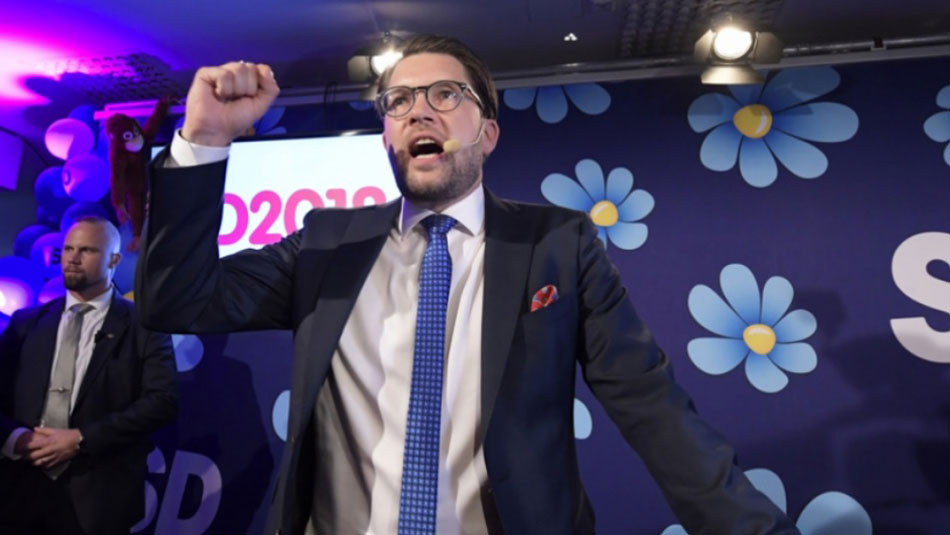
No one can dress up a far-right general election vote of 17.6 percent as good news, but nor should the disappointment felt by Sweden’s Democrat fascists in suits be ignored.
The misnamed Democrats had hoped the result would be still better, claiming that they could score as much as 30 percent and replace the free-market conservative Moderate Party as the second party.
Even mainstream opinion polls suggested the party, with its roots in Keep Sweden Swedish nazi extremism, could hit 24 percent.
The Moderates lost ground, as did the country’s largest party, the Social Democrats, but, alongside the Democrats’ surge from 12.9 per cent to 17.6, the Left party, which polled below 6 per cent in the 2006, 2010 and 2014 general elections, rose to 8 percent.
Its 28 seats, alongside the Greens’ depleted 15 and 101 for the Social Democrats, ought to ensure a continuation of Social Democrat Prime Minister Stefan Lofven’s government, whether as head of the erstwhile Red-Green Alliance or in some other guise.
Both the Social Democrats and the Moderates borrowed elements from the Democrats’ anti-refugee programme in a forlorn attempt to spike the fascists’ rise.
Yet the standing of Lofven’s party was assisted by principled anti-fascist activity backed by the Left, especially in the major cities.
Where the right had previously controlled two of the main three cities, Stockholm and Gothenburg, all three, including Malmo, are now dominated by the Social Democrats, with the Left outscoring the Democrats in the capital.
It is theoretically possible that the Moderates could, through a dirty deal with the Democrats, replace Lofven, but this is less likely than it would have been had the far-right carried the day with the kind of figures expected beforehand.
Introducing far-right parties into government has already happened in northern Europe, specifically in Finland and Norway, mirroring stronger support for right-wing extremism in Italy, Hungary, Slovakia, Germany and elsewhere.
This is partially explained by pundits as a reaction to governments accepting growing numbers of refugees from Syria, Afghanistan and various African countries heading to Europe through Libya.
Yet the numbers of refugees arriving in Sweden and Germany or even Greece and Italy are as nothing compared to those fleeing imperialist wars and their consequences in Afghanistan, Syria and Iraq to Turkey, Lebanon or Jordan.
Mainstream parties across Europe legitimise far-right parties’ programmes by giving credence, by imitation, to their ludicrous claims that taking in relatively small numbers of refugees undermines a country’s cultural identity or threatens to spark a crime wave.
As ever, they proclaim personal opposition to racism and xenophobia but ascribe their bigotry to demands from “the public” — the working class.
While some working people do indeed succumb to such negative phenomena, the reality in Sweden, as in all European states where a far-right surge has been witnessed, is that anti-racist opposition is coordinated by the left and the organised labor movement.
So-called “moderate” center-left/center-right parties routinely replacing each other in government with no discernible qualitative change in policies bear huge responsibility for alienation expressed by working people faced by a neoliberal austerity agenda, whatever party is in office.
Exploiting such alienation is easy for those seeking to divide people on the basis of skin color, nationality or religion to assist their power-seeking ambitions.
Sweden’s overall election result provides a negative example, but the opposite is true of the Left’s role in campaigning not only against xenophobia but for a socialist alternative to austerity.
This article originally appeared in Morning Star.










